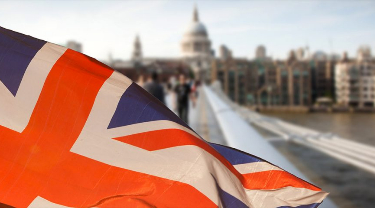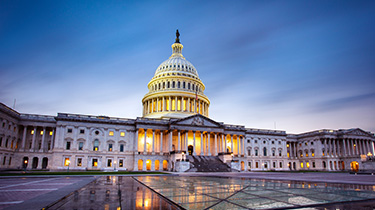Those were the headlines UK voters woke up to on the morning after the June 8 election, which saw the nation elect Prime Minister Theresa May in a hung Parliament, or what Canadians refer to as a minority government. The Conservatives secured 318 seats, eight shy of a majority government in the 650-seat House of Commons.
During the previous 12 months, the United Kingdom had voted to leave the European Union, and Prime Minister David Cameron subsequently resigned as a result of the Brexit referendum of June 2016. Now the country has elected a minority government without a strong mandate to negotiate the UK’s exit from the European Union by 2019.
The results set social media ablaze. Alex Whitt, American MSNBC news anchor, described the result as shocking. “May called a snap election to give Brexit credibility; the exact opposite happened,” she wrote on Twitter as the Conservative minority government result became apparent.
How will these historic events affect the flow of Canadian exports across the pond, especially when the globe’s gold-standard free trade deal, the Canada-European Union Comprehensive Economic and Trade Agreement (CETA) comes into effect this summer?
The UK, with a market of 64 million people, is Canada’s third-largest export destination after the United States and China. In 2016, our UK-bound exports of goods and services totalled $24.7 billion or 3.9 per cent of our total exports, derived mainly from minerals and metals as well as from transportation equipment and services.
In turn, Canada bought almost $15.2 billion worth of UK goods and services, accounting for 2.2 per cent of total Canadian imports. The UK is also the largest destination for Canadian direct investment in Europe, with a total stock of about $97.9 billion as of 2016. This is largely due to historical and cultural linkages, but also to a surge in economic performance leading up to the Brexit vote.
As a result of last June’s Brexit referendum, where 51.9 per cent of the nation voted to leave the EU, many economists saw the near-term outlook for the UK economy as decidedly gloomy, with most analysts predicting storm clouds on the horizon. However, that storm never materialized, as consumers’ confidence didn’t waver. Consequently, it’s been business as usual. Although some recent economic data shows economic growth and consumer confidence coming under pressure, the UK has not actually left the EU yet – the real change may only happen once it has done so. According to the Organisation for Economic Co-operation and Development (OECD), Brexit could result in a three per cent decline in the UK’s GDP by 2020.
At the moment, the main challenge for businesses – both domestic and international – is the uncertainty surrounding the UK’s departure from the EU. This uncertainty makes planning and investment decisions difficult.
On March 29, approximately nine months after the UK voted to leave the EU, Prime Minister Theresa May invoked Article 50 of the Lisbon Treaty – the official mechanism for withdrawing from the EU.
“This is an historic moment from which there can be no turning back. Britain is leaving the European Union,” Prime Minister May told the British parliament. “We are going to make our own decisions and our own laws. We are going to take control of the things that matter most to us. And we are going to take this opportunity to build a stronger, fairer Britain – a country that our children and grandchildren are proud to call home.”
This has set in a motion a two-year process of negotiating the UK’s withdrawal from the EU, which will culminate on March 29, 2019.
As a result of an unexpected Conservative majority win in 2015, the next UK election wasn’t slated until 2020. However, the referendum vote on Brexit led to the resignation of Prime Minister David Cameron. This precipitated a leadership race in the Conservative Party, which Theresa May eventually won. On July 13, 2016, she became the UK’s second female prime minister.
With a double-digit lead in the polls, May called a snap election for June 8, just a couple of weeks after invoking Article 50, in an attempt to secure a strong and clear mandate for negotiating the UK’s exit from the EU.
Both May and the opposition leader, Labour’s Jeremy Corbyn, publicized their EU exit plans during the election campaign. Each, however, presented a different path for getting there. May called for a “hard” approach to negotiations, while Corbyn said he would be more open to negotiations.
The Brexit issue dominated the early stages of the campaign. However, two terrorist attacks on UK soil, a growing concern over national health care and an increasing youth backlash over Brexit ultimately swung the pendulum. The voter turnout for youth aged 18-24 was approximately 72 per cent.
An exit poll conducted on June 8 by Sky News, an international media organization, revealed that the most important issue for voters was health, followed by the economy and immigration. Security and terrorism, together with the UK’s relationship with the EU, were tied for fourth.
That’s a major change from earlier in the campaign. According to a poll conducted in May by UK-based marketing and research firm Yougov, 31 per cent of voters identified Brexit as the single most important issue facing the country, followed by security at 18 per cent and health at 14 per cent.
The same poll also showed that voters identified Brexit as the main national issue when deciding how to vote, followed by health. When asked which issue they would consider most important if they were Prime Minister, 36 per cent of voters identified Brexit, followed by health.
Those results were down from a similar poll conducted by Yougov in mid-April, when the election was announced. At that time, approximately 63 per cent of Britons believed that Brexit was one of the three most important issues the UK would face in the coming months. This was by far the most popular choice, with health coming second at 42 per cent.
So where does the UK go from here?
The answer remains to be seen, but negotiations for Brexit are scheduled to begin in a few days. May, who was against the UK leaving the EU before the referendum vote in June 2016, has stated that there’s no turning back and that “Brexit is Brexit.” Gaining a strong mandate to negotiate the UK’s departure from the EU was the main reason she called the election.
With a minority government, however, experts are now saying that May’s hard-line approach will have to soften and that there is some uncertainty concerning the UK’s readiness even to start exit negotiations in addition to growing uncertainty whether Prime Minister May can hold onto power.
We will forge a new strategic partnership with the EU, including a wide-reaching, bold and ambitious free trade agreement, and will seek a mutually beneficial new customs agreement with the EU.
Guenther Oettinger, the German member of the European Commission, told German radio that he was not certain if negotiations could be launched on June 19, as planned. “We need a government that can act,” he said. “With a weak negotiating partner, there’s the danger that the negotiations will turn out badly.”
However, French politician Michel Barnier, the EU’s chief Brexit negotiator, tried to alleviate concerns in a statement on Twitter. “Brexit negotiations should start when UK is ready,” he tweeted. “Timetable and EU positions are clear. Let’s put our minds together on striking a deal.”
During the election campaign, Prime Minister May unveiled a 12-point plan for Brexit that hints at a somewhat hard-line approach to negotiations. For Canadian businesses, what’s of special interest is her commitment to ensure free trade with European markets in addition to establishing new trade agreements with other countries.
“We will forge a new strategic partnership with the EU, including a wide-reaching, bold and ambitious free trade agreement, and will seek a mutually beneficial new customs agreement with the EU,” she stated on her campaign website. “And because we will no longer be members of the single market, we will have control of our money once again: the days of Britain making vast contributions to the EU every year will end.”
Alternatively, Labour Leader Jeremy Corbyn said that his approach to Brexit would include “sensible and serious negotiations” that won’t threaten Europe. The Labour Party, which campaigned against Brexit during last year’s referendum, has a Brexit vision that includes a close new relationship with the EU, in which workers’ rights are protected.
That vision includes:
- Tariff-free access to the EU single market
- Leaving the door open for a customs union
- Refusing to accept a “no-deal” scenario
- Not holding a referendum on the final deal, but giving MPs a strong voice on the path forward
- No target numbers for migration levels
- Guaranteeing rights of EU nationals living and working the UK
CETA is Canada’s most ambitious and comprehensive free trade deal to date. It will set standards for trade in goods and services, and will also cover many other areas such as non-tariff barriers, investment, government procurement, labour and the environment. It will open up new markets in the EU for our exporters and will generate significant benefits for all Canadians.
The EU is the world’s second-largest economy and Canada’s second-largest trading partner after the United States. It is also the world’s second-largest market for imported goods and services. The EU’s annual imports alone are worth more than Canada’s GDP. Preferential access to this large, dynamic market offers tremendous opportunities and a real competitive edge for Canada.
CETA is intended to eliminate or reduce barriers in virtually all sectors and aspects of Canada-EU trade. The agreement’s broad scope addresses tariffs, product standards, investment, professional certification, labour mobility and many other areas. It will improve access to EU markets for Canadian goods and services; provide greater certainty, transparency, and protection for investments; and open up new opportunities in EU procurement markets.
For benefits to be realized, it will take work on the part of Canadian companies, governments as well as business associations to develop a comprehensive strategy.
However, upon the UK’s exit in 2019, Canada will have to negotiate a deal directly with that nation.
Theresa May stated her support for CETA during a meeting with Justin Trudeau at a G20 meeting in China in 2016. According to her campaign manifesto, she is eager to “forge ambitious free trade relationships across the world.”
According to the Financial Times, the UK will have to negotiate approximately 729 international treaties post Brexit.
In January of this year, during a speech at the Toronto Board of Trade, Liam Fox, UK International Trade Secretary, stated that developing a bilateral free trade agreement with Canada is a top priority.
Ensuring that there is no disruption in our free trade either with Canada or any other partner is a top priority.
“The United Kingdom must reforge our relationships with those nations who have been our longest-serving and closest allies,” he said. “Ensuring that there is no disruption in our free trade either with Canada or any other partner is a top priority.”
Senior Canadian Trade Analyst Jayson Myers says that, while the UK election outcome was a surprise, there’s no need to panic since the path forward will become clearer and more certain in the coming days. “My message for Canadian companies is to keep calm and carry on when it comes to trade with the UK,” he said.





